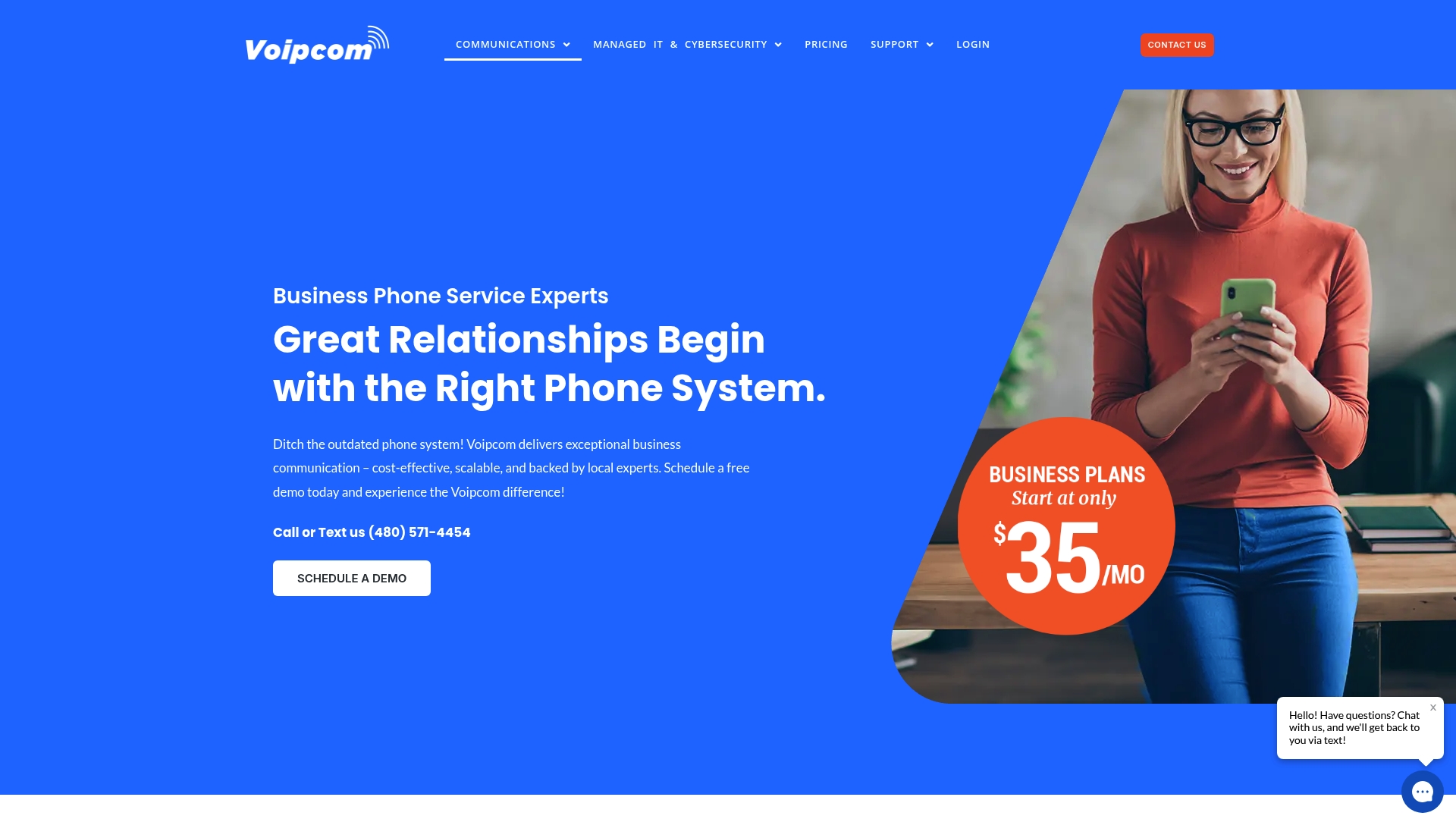Did you know that nearly 30 percent of customers hang up if left too long on hold and never call back? That single moment can cost businesses valuable opportunities and trust. Managing high call volumes while delivering prompt, personal attention has become a top challenge for companies everywhere. By understanding how call queues work, businesses can build smooth, stress-free phone systems that keep both customers and employees happy.
Key Takeaways
| Point | Details |
|---|---|
| Call Queues Enhance Communication | Call queues streamline incoming calls, improving routing efficiency to ensure customer satisfaction. |
| Diverse Queue Types Offer Strategic Advantages | Common queue types like round-robin and skills-based queues cater to various business needs, enhancing customer service and operational effectiveness. |
| Intelligent Routing and Analytics Are Key | Advanced call queues utilize intelligent routing mechanisms and provide detailed analytics to optimize communication performance. |
| Avoid Common Pitfalls for Success | Effective call queue management requires adequate staffing, training, and monitoring to prevent long wait times and customer frustration. |
Table of Contents
- What Are Call Queues In Business Communications
- Types Of Call Queues And Key Differences
- How Call Queues Work: Features And Flow
- Benefits And Use Cases For Smbs And Enterprises
- Common Call Queue Mistakes And Optimization Tips
What Are Call Queues in Business Communications
Imagine calling a business and being greeted by a smooth, organized system that efficiently routes your call to the right person. That’s the magic of call queues – virtual waiting rooms designed to transform how businesses handle incoming phone communications. According to Microsoft’s technical documentation, call queues are sophisticated systems that manage incoming calls by holding them in a digital sequence until an available agent can assist.
At their core, call queues are more than just holding lines. They’re intelligent routing systems that can segment calls based on multiple parameters like contact type, priority, and urgency. As research from Intermedia indicates, these systems can configure routing through cloud communication platforms with incredible precision. Key features typically include:
- Automatic call distribution to available agents
- Customizable hold music or informational messages
- Priority queuing for urgent calls
- Detailed analytics on call wait times and agent performance
- Overflow management for high-volume periods
For small businesses in Denver and across Arizona and Colorado, call queues represent a professional communication upgrade. They eliminate the chaos of traditional phone systems, ensuring every caller feels valued and gets routed efficiently. Think of them as a digital receptionist working 24/7, transforming how your business handles customer interactions. Learn more about enhancing call efficiency with modern call queue technologies that can significantly improve your customer service experience.
Types of Call Queues and Key Differences
Not all call queues are created equal. Call queuing technologies offer multiple sophisticated approaches to managing incoming communications, each designed to solve specific business challenges. According to Fireberry’s research, businesses can leverage several strategic queue types that dramatically improve customer interaction and operational efficiency.
Let’s break down the most common call queue strategies:
Here’s a comparison of the most common call queue types and their key features:
| Queue Type | Routing Method | Key Benefit |
|---|---|---|
| Round-Robin | Even agent distribution | Balanced workload |
| Priority Queue | Based on caller priority | Fast service for VIP or urgent |
| Skills-Based | Matched to agent expertise | Effective issue resolution |
| Virtual Queue | Callback, holds place in line | Reduces caller hold frustration |
- Round-Robin Queues: Evenly distribute calls across available agents, ensuring fair workload allocation
- Priority Queues: Route calls based on customer value, membership status, or urgency levels
- Skills-Based Queues: Connect callers with agents possessing specific expertise matching their needs
- Virtual Queues: Allow customers to retain their place in line without staying on hold continuously
Virtual queue systems represent a particularly innovative approach.
As Wikipedia’s technical documentation explains, these systems use Automatic Call Distribution (ACD) technologies to provide callback options. Imagine a scenario where a customer can request a callback instead of waiting endlessly, preserving their queue position without occupying phone lines.

How Call Queues Work: Features and Flow
Call queues are like digital traffic controllers for incoming business communications, transforming chaotic phone interactions into streamlined experiences. According to Five9’s technical documentation, these systems create virtual waiting lines that ensure every caller gets routed efficiently, maintaining order and preventing communication bottlenecks.
The typical call queue workflow follows a precise sequence:
- Incoming Call Arrival: Call enters the virtual queue when all agents are busy
- Caller Placement: Caller is positioned in line based on order of arrival
- Wait Experience: Caller hears hold music or informational messaging
- Routing Intelligence: System tracks queue statistics and routes to next available agent
As research from Callwave indicates, modern call queues offer sophisticated routing mechanisms. They can direct calls through Interactive Voice Response (IVR) menus, match callers with agents based on specific skills, and provide real-time analytics on wait times and performance.
Explore our comprehensive guide to optimizing business communication flows to understand how these intelligent systems can revolutionize your customer interaction strategies.
Benefits and Use Cases for SMBs and Enterprises
Call queues aren’t just a technical nicety – they’re a game-changer for businesses of all sizes looking to transform their customer communication strategies. According to research from Stringeex, these intelligent systems can dramatically improve critical metrics like first-call resolution rates and reduce call abandonment, with studies showing that nearly 30% of customers who hang up never call back.
The benefits for small and medium businesses are particularly compelling:
- Reduced Wait Times: Eliminate customer frustration with intelligent call routing
- Improved Customer Experience: Provide professional, consistent interaction
- Increased Agent Productivity: Optimize workforce management and performance
- Flexible Call Handling: Route calls based on time, skill, or specific conditions
- Performance Analytics: Track and improve communication effectiveness
For enterprises and SMBs in Denver and across Arizona and Colorado, RingCentral’s analysis highlights how call queues provide granular insights into communication performance. They enable businesses to measure critical metrics like wait times, talk duration, and hold periods, transforming what was once a black box of customer interactions into a transparent, optimizable system. Discover how VoIP can revolutionize your business communications and take your customer service to the next level.
Common Call Queue Mistakes and Optimization Tips
Navigating call queue management is like walking a tightrope – one misstep can send your customer experience tumbling. According to Vonage’s comprehensive research, businesses frequently stumble into critical call queue traps that can devastate customer satisfaction and operational efficiency.
Here are the most common mistakes to avoid:
- Understaffing: Leaving too few agents to handle incoming calls
- Inadequate Training: Agents unprepared to handle complex customer inquiries
- Excessive Wait Times: Allowing queues to become frustratingly long
- Lack of Intelligent Routing: Failing to match callers with most appropriate agents
- Poor Performance Monitoring: Not tracking key communication metrics
Optimization isn’t just about avoiding errors – it’s about creating a strategic communication ecosystem. Skills-based routing and Interactive Voice Response (IVR) systems can dramatically improve first-call resolution rates, distribute workloads more fairly, and boost overall staff morale. These techniques not only enhance customer experience but also reduce operational costs. Learn more about efficient call handling strategies that can transform your business communication approach from chaotic to exceptional.
Elevate Your Call Queues with Voipcom’s Modern Solutions
Are you tired of customer frustration caused by long hold times, missed calls, or poor routing in your current phone system? The article explored how call queues can solve these challenges by providing smart call distribution, priority routing, and virtual waiting rooms. Many small and medium businesses struggle to move beyond outdated phone systems, but with Voipcom, you get a fully managed solution that eliminates complexity and outdated technology. Our cloud-based communication platform brings features such as skills-based routing, virtual queues, and seamless integration to ensure every customer interaction is professional and efficient.
Discover how you can transform your business phone experience, lower costs, and free your team to focus on customers instead of managing infrastructure. Visit Voipcom’s main website and explore our solutions for enhancing call efficiency. Ready to leave behind phone system headaches? See how our team can fully manage your communications, provide local support, and deliver the powerful call queue features discussed in the article. Take the next step toward a reliable modern phone system that works for you. Contact us today through Voipcom’s main website for a personalized demo or consultation.
Frequently Asked Questions
What is a call queue?
A call queue is a virtual waiting room that manages and routes incoming business calls to available agents, ensuring callers are attended to efficiently.
What are the different types of call queues?
Common types of call queues include Round-Robin, Priority Queues, Skills-Based Queues, and Virtual Queues, each designed to meet specific business communication needs.
How do call queues improve customer service?
Call queues reduce wait times, enhance customer experience through efficient routing, and provide analytics for performance tracking, leading to improved first-call resolution rates.
What are the key features of call queues?
Key features of call queues include automatic call distribution, customizable hold music, priority queuing for urgent calls, detailed analytics, and overflow management for high-volume periods.



